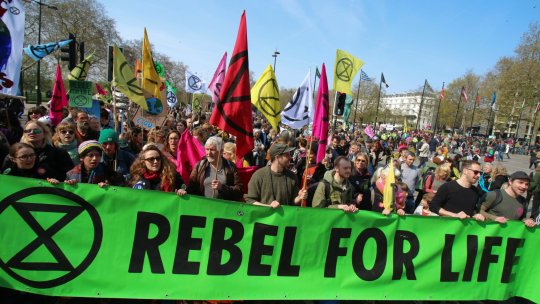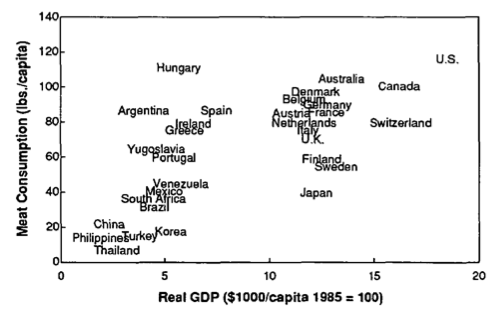
As Greta Thunberg rightly put it, our house is on fire. It’s a fire that has been growing gradually over the years, and in the process, destroying our one and only home. It’s a fire that causes its inhabitants fear, anxiety and rage, all emerging from feelings of betrayal and helplessness. While these sentiments are valid and completely justified, the problem, however, is that this is not a case of arson – while there is a clear desire to put out this fire, there isn’t much attempt to do so. The unfortunate reality is that most of us who implore the higher-ups to put out this fire are simultaneously (though unwittingly) throwing fuel into it. Such is the case, and weakness, of climate strikes.
With the recent surfacing of data regarding the severity of climate change, the issue has gained mass amounts of attention and anxiety from the public. Over the past few months, there have been outbreaks of protests and strikes to warn the public about the future of our planet and to urge the government to take action. Among these is the Extinction Rebellion, which is an international movement aimed at combatting climate change via acts of civil disobedience.
Originating in the United Kingdom, the rebellion has observed marches and sit-ins all across the country, containing crowds of participants rallying in favour of political changes in order to mitigate the climate crisis. While it is undeniable that the planet is currently in dire need of healing from the damage it has endured from human activity, the Extinction Rebellion, as well as other climate strikes that take place world-wide, fail to tackle the root of the issue, thereby be in danger of redundancy. Although these strikes are important in terms of raising awareness, the aims of the Extinction Rebellion unfortunately miss the mark in terms of effectively dealing with the climate crisis.
A look into the issue
Civil disobedience is a non-violent form of protest and refusal to obey certain laws, in an attempt to fight for a cause and/or fight against unjust rules and policies that have been put in place. Some of the most prominent acts of civil disobedience include the Civil Rights Movements of the 1960s in the United States, the Quit India Movement, and the Women’s Suffrage Movement. Civil disobedience is, therefore, most effective in cases where the government imposes certain policies or restrictions that go against the favour of the public. Because of this very nature of civil disobedience, one can argue that it may not be the most effective means of combatting climate change, as this is an issue that has been worsened by the people.
According to the Environmental Protection Agency (EPA), some of the largest sources of greenhouse gas emissions include electricity and heat (25%), agriculture and forestry (24%), and industry (21%). This highlights one of the more prominent causes of climate change: consumerism.
While consumerism and economic success have sort of a symbiotic relationship, global consumer culture requires a lot of resources in order for the growing demands to be met. With an increase in financial stability comes an increase in consumerism, and thereby an increase in the utilization of resources as well as greenhouse gas emissions.
This, however, is not to say that climate change is entirely the fault of the middle class. This is instead to show that economic freedom grants people the ability to use up a lot of resources, and we should, therefore, be mindful of where we put our money. Some industries that have seen an increase in consumer demands include animal agriculture and fast fashion, both of which account for greenhouse gas emissions, deforestation, and solid waste.
According to the UN Environment Programme, the fashion industry produces 92 million tonnes of solid waste and, “more greenhouse gas emissions than all international flights and maritime shipping combined.” Similarly, the demand for animal-based foods such as meat, dairy and eggs have also been on the rise, and have an adverse impact on the planet. According to the World Health Organization, global meat consumption has gone from 20kg per year in the 1960s to 78kg in the 1990s, and now an expected 89.5kg by 2030. In the Environmental Working Group’s Meat Eater’s Guide to Climate Change and Health, they claim that animal-based foods produce more production and post-production emissions as opposed to plant-based foods.
The growing consumer demand for some of these animal-based foods is even forcing certain countries to clear out forests in order to meet the demands of these products. An example of this would be the Amazon rainforest fires in Brazil, which the country’s recent president-elect, Jair Bolsonaro, is supporting in order to meet the global demand for beef. Bolsonaro has openly expressed his disgruntlement with environmental policies, even remarking that they were “suffocating the country”, a comment that he made in reference to the country’s large agribusiness sector relying on the clearing of forests.
The consumption of animal-based foods, just like fast fashion, has been seen to increase alongside an increase in income levels. An article published by the Journal of International Food & Agribusiness Marketing in 1996 found a positive correlation between the GDP per capita and meat consumption.
Therefore, with increasing financial stability, consumers have the responsibility of contributing to as little environmental damage as possible with their consumption and lifestyle.
Conclusion
In short, it would be incorrect and rather counterproductive to blame one side or the other. While political leaders should take the climate issue more seriously and create policies that are in favour of a greener future, the consumers themselves have an equal responsibility to be mindful of their actions as well. In a capitalist system, industries and big businesses only have as much power as the consumer base gives them. If a product or service is in high demand, the respective industries are inclined, and to an extent, even obligated to make sure that these are met with a continuous supply. Therefore, in order to combat climate change, we the consumers can take measures to reduce our carbon footprint, and invariably give these industries less power to hurt the planet.
As for the effectiveness of civil disobedience in this kind of a situation, the most it can do is make people aware of the severity of the problem, and possibly even cause a big enough ripple for politicians to take it into serious consideration. While this too is just as important and vital to the mitigation of the problem, the issue can only be fully and effectively dealt with once most people, if not everyone, decide to take an individual stance and make amends to their own lifestyles for a better future. Therefore, along with walk-outs and sit-ins, make sure to contribute in smaller ways like preserving water, reducing electricity consumption, eating less animal-based foods, indulging in fast fashion a little less, using public transportation more often, planting a tree, and many more things that can make a great difference in the long run. Civil disobedience in this context does not necessarily have to be protesting, but rather depriving the establishment of money and power, in order to send a more silent yet stronger message.
Written by Kalyani Nandagopal
Image Sources: Google Images, Academic Journals
Sources:
Dory, K. (2018, June 27). Why fast fashion needs to slow down. Retrieved from https://www.unenvironment.org/news-and-stories/blogpost/why-fast-fashion-needs-slow-down.
Global Greenhouse Gas Emissions Data. (2019, September 13). Retrieved from https://www.epa.gov/ghgemissions/global-greenhouse-gas-emissions-data.
Meat Eater’s Guide to Climate Change + Health PDF (n.d.)
Sengupta, S. (2018, October 17). What Jair Bolsonaro’s Victory Could Mean for the Amazon, and the Planet. Retrieved from https://www.nytimes.com/2018/10/17/climate/brazil-election-amazon-environment.html.
Schroeder, T., Barkley, A., & Schroeder, K. (1996). Income Growth and International Meat Consumption. Journal of International Food & Agribusiness Marketing, 15–30.


Leave a Reply
You must be logged in to post a comment.